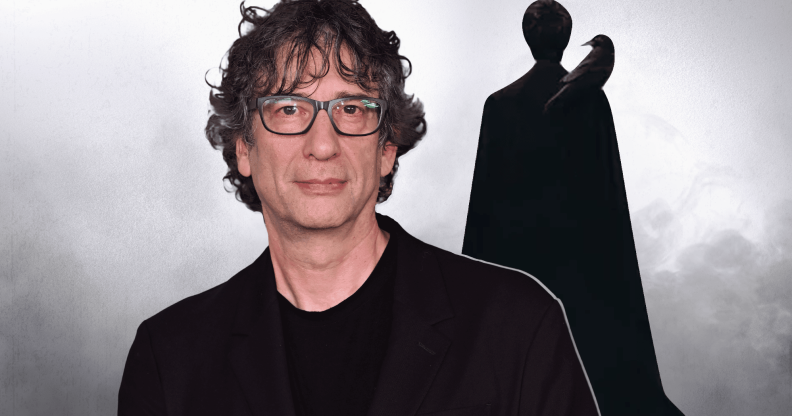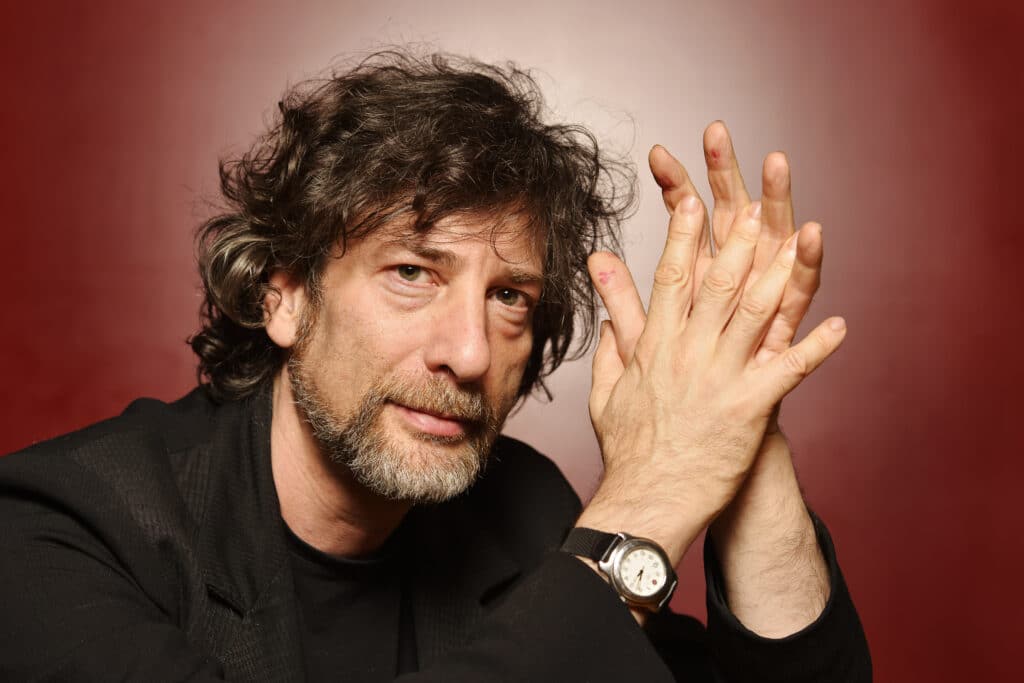The Sandman’s Neil Gaiman explains how his real-life friends inspired LGBTQ+ characters

Neil Gaiman wrote The Sandman back in the 90s. (Getty/Netflix)
The Sandman creator Neil Gaimain has explained why the series is so packed with LGBTQ+ characters.
Gaiman wrote The Sandman comic book series between 1989 and 1996.
Now, it’s been adapted in a major new Netflix series, which has stayed true to the original by introducing queer characters such as Desire, a gender-fluid character played by non-binary actor Mason Alexander Park, and the bisexual Johanna Constantine (John in the comics), played by former Doctor Who star Jenna Coleman.
This LGBTQ+ representation has sparked much debate, and while there has been a largely positive reaction, there has been the odd bigot questioning Gaiman’s character choices.
But Gaiman has said the show’s inherent queerness is true to his original vision.
Speaking to The Queer Review, Gaiman said: “When I was writing it, and today, I had gay friends, I had trans friends. I wanted to see them represented in the comics that I was writing.
“And it felt like to me that if I wrote comics and left them out then I would not be representing my world or the world that I was perceiving accurately, bravely or truly and that was the point of art so for me that was a given.”

“Sandman” creator Neil Gaiman, pictured in 2014 (Ulf Andersen/Getty)
When Gaiman released The Sandman in the early ‘90s, the inclusion of queer characters was seen as controversial.
“I remember getting a very grumpy letter from the ‘Concerned Mothers of America’, informing us that due to the number of gay characters in Sandman they would be boycotting us and we had to repent,” he said.
“We never repented and the sales just went up, and up, and up. So I never really worried about their boycott.”
The Sandman‘s executive producer, Allan Heinberg, also shared his perspective on the importance of LGBTQ+ inclusion.
“I, as a queer person, always felt seen, and heard, and held by Sandman and obviously I wanted the show to do that for the LGBTQIA+ community,” he said.
“A number of people in the writers rooms for both seasons one — and we’ve started talking about season two — are non-binary, and gay, and lesbian, and bisexual, and trans.
“Everybody was able to read these stories in 2021 and 2022 in a fresh way and say, ‘This still works, it really works’.”

